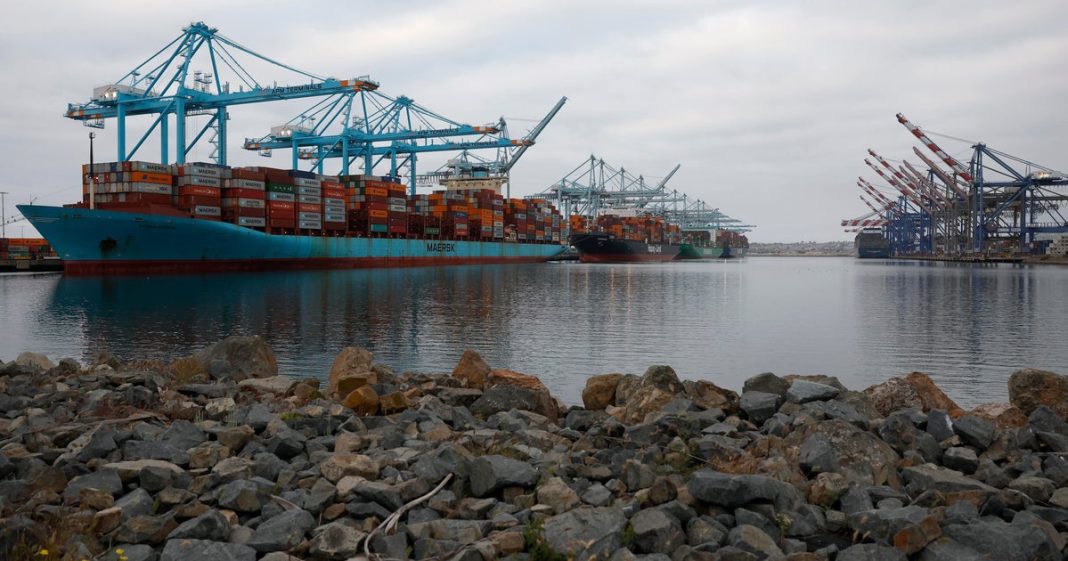The Trump administration could pursue alternative pathways for imposing tariffs after a federal court this week struck down its use of emergency powers to enact broad levies on U.S. trading partners, according to experts.
At risk is much of Mr. Trump’s trade agenda, which relies on tariffs as a way to secure better terms of trade, boost the U.S. manufacturing sector and generate what he claims could be trillions in new federal revenue. For now, Mr. Trump’s tariffs remain in place after a federal appeals court in Washington, D.C., on Thursday temporarily halted the decision, reinstating the levies.
If the trade court’s ruling is ultimately upheld, Mr. Trump has other tools for pursuing his trade agenda, although they don’t provide the broader authority of the International Emergency Economic Powers Act (IEEPA), which he tapped to authorize trade duties on almost every foreign nation.
“He would have a couple other authorities. However, they are not nearly as broad and aggressive as the IEEPA tariffs,” said Clark Packard, a research fellow in the Herbert A. Stiefel Center for Trade Policy Studies at the Cato Institute, a nonpartisan public policy institute. “There are so many checks and administrative aspects to them that they are slower.”
Mr. Trump announced his tariffs on April 2 in an initiative he referred to as “Liberation Day.” At the time, the president described trade deficits with other nations as “a national emergency,” which he said gave him the authority to impose tariffs under IEEPA.
But a lawsuit filed by five U.S.-based companies and a group of 12 states challenged the president’s use of the emergency powers law, and on Wednesday the Court of International Trade blocked the tariffs.
President will use “tools at his disposal”
As the legal process plays out, Trump administration officials say the president is considering using other tools at his disposal to advance his trade policies.
“The Trump administration remains committed to addressing our country’s national emergencies of drug trafficking and historic trade deficits with every legal authority conferred to the President in the Constitution and by Congress,” White House spokesperson Kush Desai said in a statement to CBS News on Thursday.
Desai added, “Regardless of the developments of this litigation, the President will continue to use all tools at his disposal to advance trade policy that works for all Americans.”
Here are the other options Mr. Trump could turn to, and how he could use them, according to policy experts.
Section 232 tariffs of the Trade Expansion Act of 1962
Experts say Mr. Trump could turn to Section 232 of the Trade Expansion Act of 1962, which allows the U.S. president to restrict imports in the name of national security. Mr. Trump already has tariffs in place on steel, aluminum and auto imports based on this regulation.
There’s a catch, though. The statute requires the Department of Commerce, in consultation with the Department of Defense, to investigate and confirm that imports “threaten to impair” U.S. national security before the president can invoke Section 232. An investigation can take up to 270 days, which could slow down Mr. Trump’s timeline for imposing tariffs.
“It has to withstand legal scrutiny, it can’t just be done over the weekend,” Packard said.
Additionally, under Section 232, tariffs can only be applied to specific sectors if the trade around those imports threaten national security, rather than the broad approach that Mr. Trump used with IEEPA.
“Once the report is issued, the president has wide discretion, but he has to target individual sectors of product, like steel and aluminum,” Packard said. “They can’t be blanket, across-the-board tariffs.”
Some experts think Mr. Trump is likely to turn to this statute to further his tariff agenda.
“In our view, the administration will prepare the groundwork for a more surgical increase in tariffs beginning this summer following Section 232 trade investigations into strategic industries like pharmaceuticals, critical minerals, lumber, copper and semiconductors,” Kurt Reiman, head of fixed income Americas at UBS Global Wealth Management, said in a research note.
He added, “These sectors were initially excluded from the 10% baseline tariff because President Trump had intended to levy separate tariffs to reduce the U.S.’s reliance on foreign producers of these products by encouraging domestic production.”
Section 301 of the Trade Act of 1974
Mr. Trump could also draw on the Trade Act of 1974 to impose new tariffs. Section 301 of that law allows the U.S. president to apply county-based tariffs at a rate of his choosing if the U.S. Trade Representative determines that another country is engaging in unfair foreign trade practices.
There are limitations, however. The law can’t be applied universally to all imports from foreign nations.
“There has to be justification for it, so President Trump can’t unilaterally decide to impose broad-based tariffs on the entire world,” Angela Santos, a partner and customs practice leader at law firm ArentFox Schiff told CBS MoneyWatch.
Section 122 of the Trade Act of 1974
Additionally, Mr. Trump could use Section 122 of the Trade Act of 1974, which is designed to address large trade deficits with other nations, to impose tariffs of up to 15% for a maximum of 150 days.
“I could see this being employed very easily,” Santos said. “It seems like the easiest way to impose tariffs, particularly because most trade partners have large deficits with the U.S.”
Applying tariffs under Section 122 wouldn’t require an investigation, meaning Mr. Trump could quickly use it to assess a broad-based import duty.
“The administration could quickly replace the 10% across-the-board tariff with a similar tariff of up to 15% under Sec. 122,” Goldman Sachs analysts wrote in a report this week.
The tariffs could be in effect “within days if deemed necessary,” Goldman Sachs said.
Congressional action would be needed to extend the tariffs after 150 days.
Section 338 of the Tariff Act of 1930
Under Section 338 of the Tariff Act of 1930, the president can impose tariffs of up to 50% on imports from countries that discriminate against the U.S. The law defines discrimination as when a trading partner’s laws, import duties, regulations or other restrictions place the U.S. at a disadvantage.
These tariffs differ from Section 301 levies in that the tariff rate is capped at 50%. Additionally, no formal investigation is required. The authority has never been used, according to experts.




